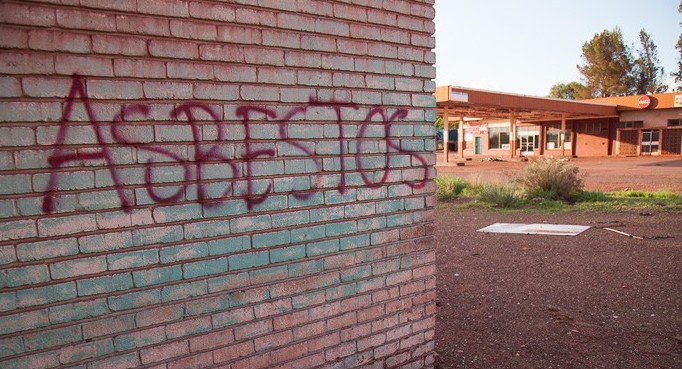South Africa refuses to support initiative to restrict deadly asbestos trade
A proposal by a dozen African states would list chrysotile asbestos under global treaty on hazardous substances
Asbestos is a toxic killer. The latest estimate is 194,000 occupational deaths globally in a year. South Africa banned asbestos in 2008. One would think, then, that the country would support a proposal by 12 African states to prevent a handful of countries from continuing to block the listing of chrysotile asbestos under the Rotterdam Convention. But instead, South Africa is refusing to support the initiative.
The Rotterdam Convention (on Prior Informed Consent Procedure for Certain Hazardous Chemicals and Pesticides in International Trade) is a multinational treaty that compels states to obtain informed consent from countries to which they wish to export a toxic substance. A major flaw, however, is that chrysotile asbestos is being blocked from appearing on the Prior Informed Consent list.
Some substances regulated under the Convention are notorious pollutants, like polychlorinated biphenyls (PCBs), dieldrin, DDT, and asbestos. However, chrysotile asbestos, which represents 95% of all the asbestos sold over the past century and today is the only form of asbestos being exported, has been left off the list.
Article 22 of the Rotterdam Convention requires that a decision to add a hazardous substance in Annex III must be made by consensus at the Conference of the Parties (COP). This effectively grants any one country the ability to keep a killer substance, in this instance chrysotile asbestos, from being listed.
At the first two COP meetings, asbestos interests succeeded in keeping the issue off the agenda. The Chemical Review Committee has recommended since 2005 that chrysotile be listed. At every COP meeting since 2006, however, a handful of countries have prevented its listing by refusing consensus. No other chemical has been subjected to this continued blocking since the Convention came into existence.
This has meant that this hardy and biopersistent toxin has escaped international regulation, despite the mounting death toll. The diseases it causes will continue to occur for the rest of this century at least.
The eighth meeting of the Rotterdam Convention is coming up in Geneva in April-May 2017. And a group of African countries have proposed that decisions to list hazardous substances be taken by a majority vote when consensus proves impossible.
The countries leading the proposal are Botswana, Cameroon, Ghana, Kenya, Lesotho, Malawi, Mozambique, Namibia, Nigeria, Swaziland, Tanzania and Zambia.
Zimbabwe, a major producer of chrysotile asbestos, has opposed the amendment. South Africa joins Zimbabwe, Russia, Kazakhstan and Kyrgyzstan in opposition to the amendment, even though South Africa has banned trade in all forms of asbestos, well aware of the lung, laryngeal and ovarian cancers, mesothelioma, and asbestosis it causes in workers and other people exposed to it.
But South Africa’s foreign policy is apparently not governed by any substantive health or environmental considerations.
The Rotterdam Convention is intended to end the unsafe trade in hazardous products by elevating levels of transparency in the trade of listed products. Yet, South Africa is helping to keep this trade going.
© 2017 GroundUp. 
This article is licensed under a Creative Commons Attribution-NoDerivatives 4.0 International License.
You may republish this article, so long as you credit the authors and GroundUp, and do not change the text. Please include a link back to the original article.



